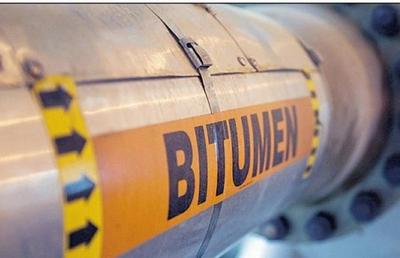
The west-to-east pipeline idea is inching closer to reality as TransCanada intends to submit an application to the National Energy Board (NEB), the federal regulator on cross-jurisdictional energy projects.
While the process proceeds so does the rhetoric and public relations. TransCanada’s Energy East officials complain about the “noise” generated by Canadians and non-profit organizations who are voicing concern about environment and public safety. Citizen’s questioning the safety of a major, and inherently risky, infrastructure project that will deliver carbon intensive bitumen from the northern Alberta to super tankers in the sensitive and dynamic waters of the Gulf of Saint Lawrence and the Bay of Fundy should not be dismissed so flippantly. Proponents are intent on branding this pipeline as a ‘nation building’ exercise that will create a plethora of jobs and address our country’s energy security.
The media seems to have adopted the narrative that the bitumen will flow to the refinery in Saint John, New Brunswick. Implying a bonanza of refining opportunity for Irving Oil and disregarding the evidence that the majority of the bitumen will be loaded onto tankers in Saint John, shipped through the Bay of Fundy and delivered to the highest bidder. Leaving New Brunswickers with the risks.
It’s a powerful tide to overcome. However, this week, thanks to the analytical work of the Pembina Institute, a very timely and important report was released that starts to outline the evidence that this ‘nation building’ project is a climate wrecking one.
The Pembina report “Climate Implications of the Energy East Pipeline” predicts that the carrying capacity of the pipeline, the largest proposal currently in North America (including the Keystone XL), represents the same amount of green house gas emissions as would 7 million new cars put to the roads across Canada every year.
This is a significant consideration, and one that unfortunately, has not been a part of the National Energy Board’s review in past pipeline projects, including Northern Gateway. What the Pembina report attempts to start is a broader discussion – to more than just the pipe and its path but to the extraction, transport, processing, and use of the oilsands and those ‘upstream’ contributions to green house gas (GHG) emissions. Which we know we have to reduce dramatically in order to avoid 2 degrees warming that would trigger catastrophic and unstoppable runaway climate change.
The report says:
- The crude production needed to fill the Energy East pipeline would generate an additional 30 to 32 million tonnes of carbon emissions each year — the equivalent of adding more than seven million cars to Canada’s roads. By comparison, the annual emissions for the entire province of New Brunswick is about 18 million tonnes.
- By comparison, filling the proposed Keystone XL pipeline would increase emissions by 22 million tonnes. Energy East represents a capacity (and emissions) that is 1/3 larger than Keystone XL.
- Filling the Energy East pipeline would help expedite 650,000 to 750,000 barrels per day of additional production from the oilsands.
Of course we are not surprised by the results of Pembina’s work. These are things we know. We know that tying ourselves to brand new fossil fuel infrastructure from here on out will result in increased emissions and get us further away from our necessary targets. But the number crunching is welcomed. It allows us to speak in a language that (a few) policy makers understand.
In New Brunswick, we have a long way to go in coming to terms with the risks as the 400km of new pipeline is proposed to cross 195 waterways, provincially significant wetlands, 3 Natural Protected areas, a number of municipal aquifers and unceded Wabanakai territory. There are the unique qualities of the products passing by. Baaken crude is highly volatile and oilsands bitumen sinks. There are the risks to the Bay of Fundy. Tanker traffic creates noise pollution damaging and disruptive to whales, including the endangered north Atlantic right whale. Any oil spilled meets the strong currents, fog, and unpredictable conditions of the highest tides in the world.
We are encouraged to accept these risks for our personal safety because the trains are literally falling off the track. While we certainly need better regulation of rail transport of volatile substances, this tack is being used to distract us from the heart of the issue. A recent report by the Fraser Institute indicates they both spill the same amount of product: trains spill more often but pipelines spill larger volumes. Furthermore there is enough petroleum in northern Alberta to ship it by all the trains and pipelines that can be imagined. “Trains versus pipelines” is not the real debate, it’s the distraction needed to manufacture our consent. The real debate is about ignoring our oilsands shackles or breaking free for a cleaner, healthier, more sustainable economy and people.
Pipeline proponents will continue to tell us there is no alternative. Citizens intent on unhitching our wagon from the technologies of the past are going to have to make some noise.
Matthew Abbott is the Fundy Baykeeper for the Conservation Council of New Brunswick and Stephanie Merrill is the Director of the Freshwater Protection Program. They can be reached at marine@conservationcouncil.ca and water@conservationcouncil.ca

